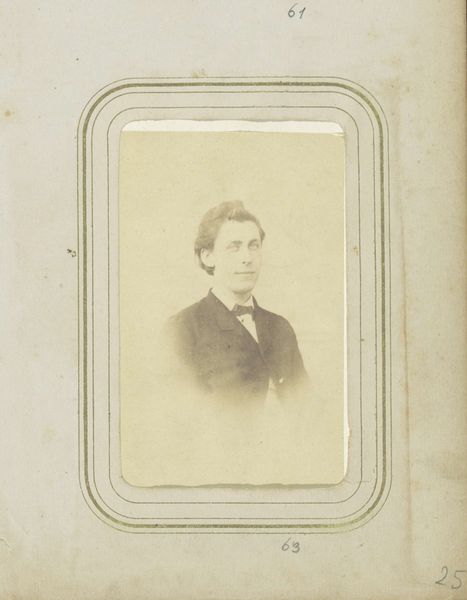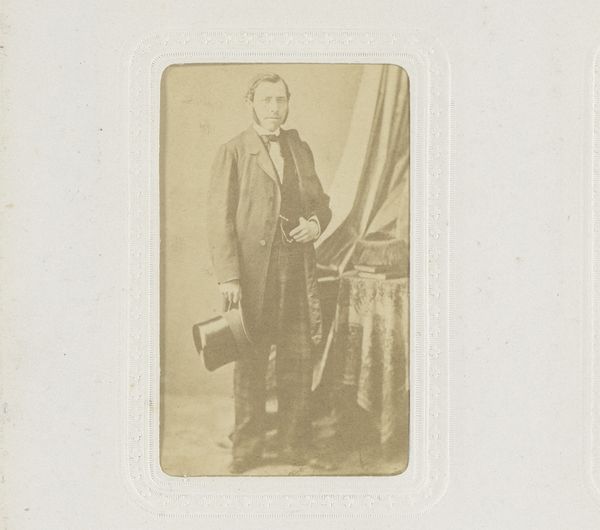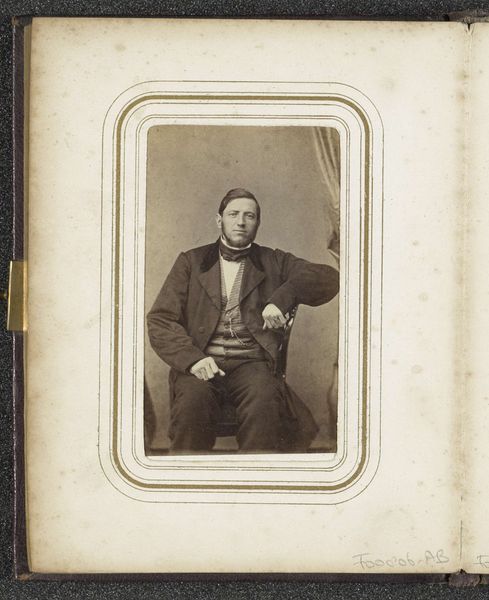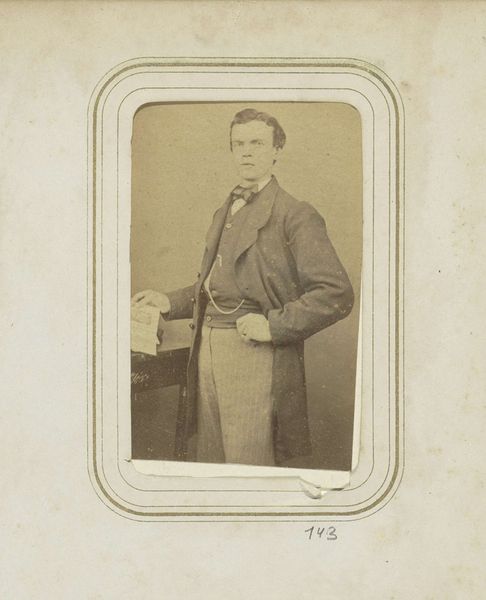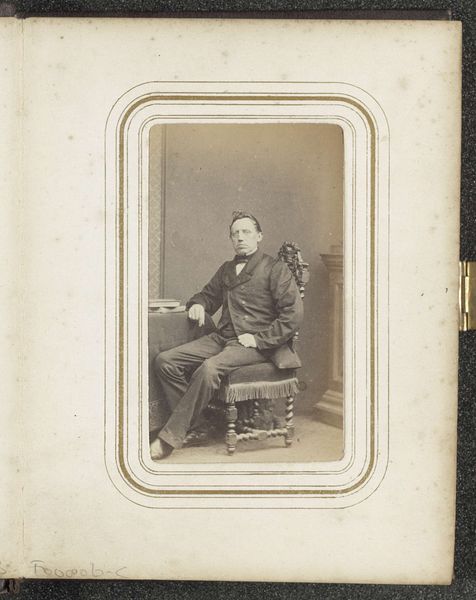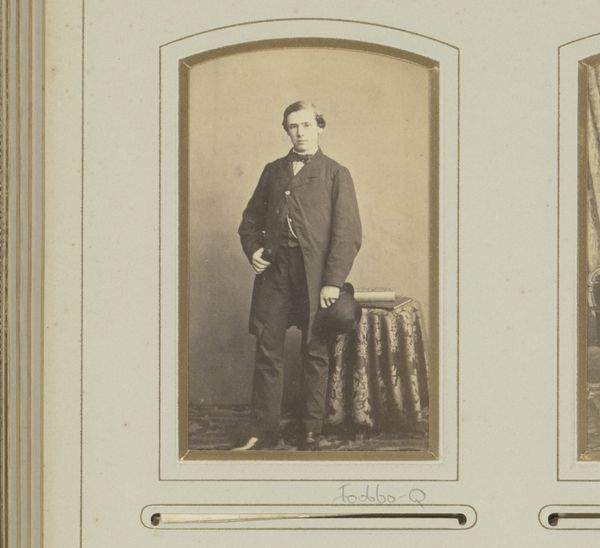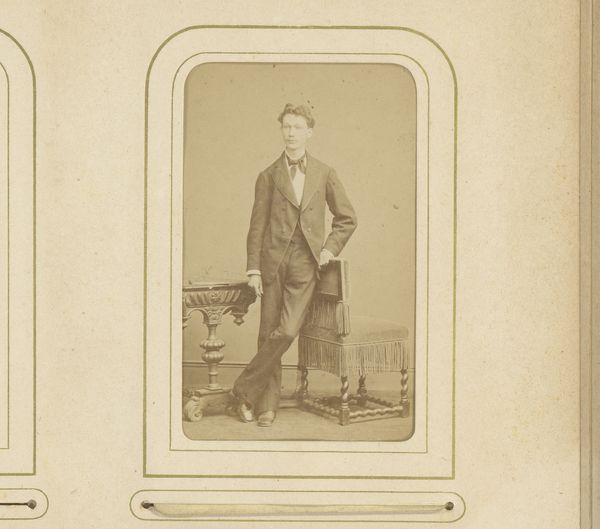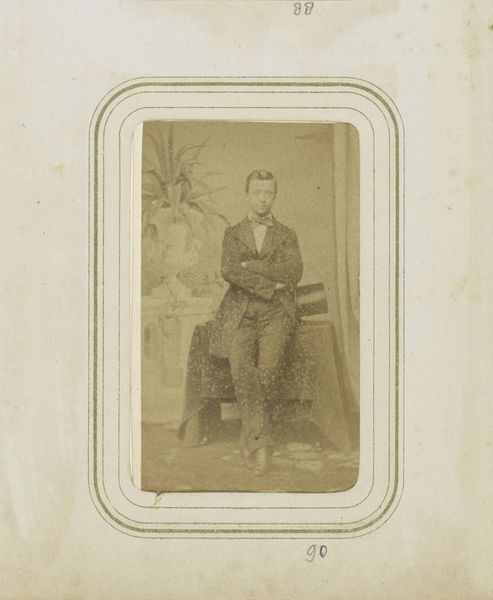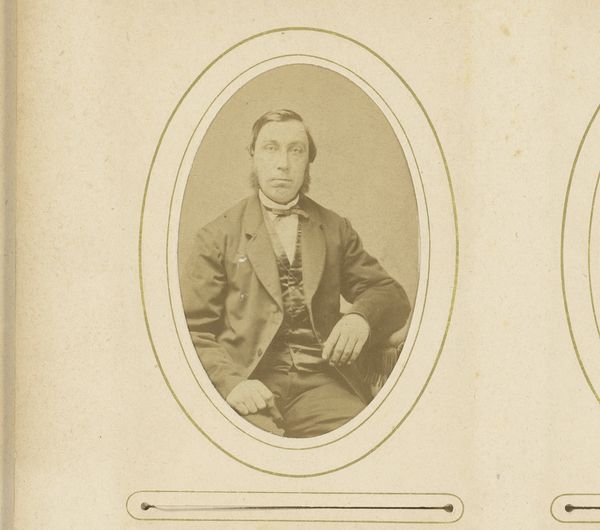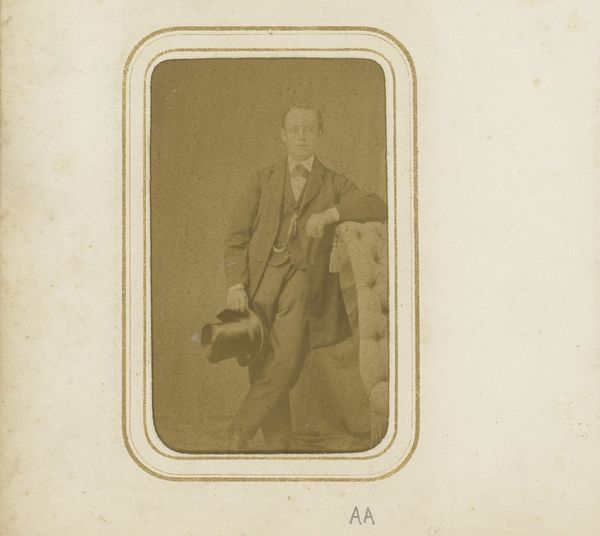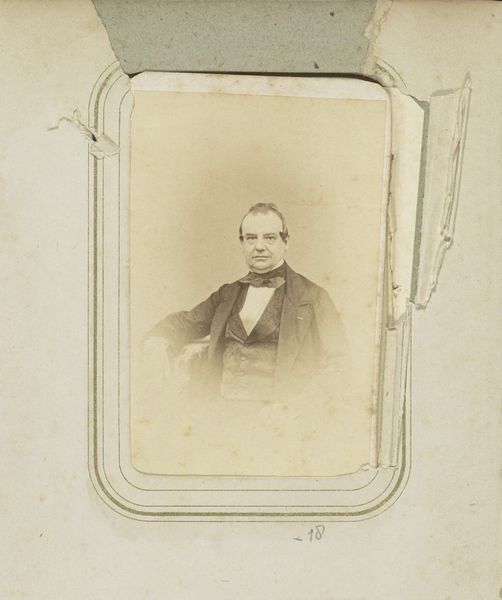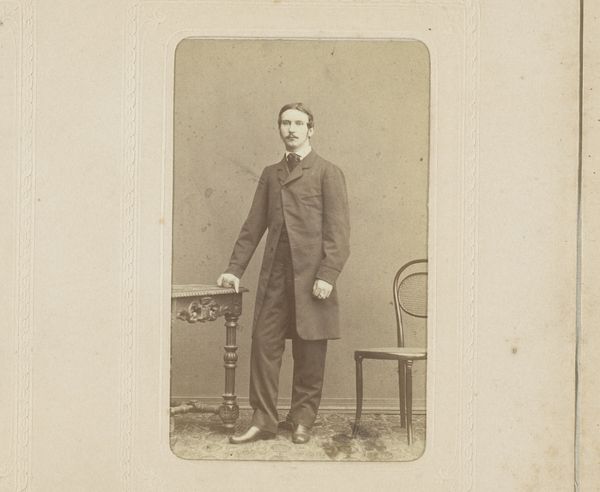
Dimensions: height 88 mm, width 54 mm, height 100 mm, width 59 mm
Copyright: Rijks Museum: Open Domain
Curator: Let’s take a look at this photograph, entitled "Portret van W.J.M. Asmus met een handschoen in de hand," likely from 1862. It is made using the gelatin silver process, a technique very prevalent in that period for its capacity to produce highly detailed and reproducible images. Editor: My first thought? What a beautifully haunting face. The lighting gives him this sort of ethereal glow, even with that slightly awkward, posed stance. You just wonder what he was truly like. Curator: The awkwardness, I believe, arises precisely from the performative aspects inherent in early photography. It wasn’t simply about capturing a likeness; it was about projecting a certain social standing and respectability through meticulous staging and the careful control of material presentation: note the single glove and studied gaze. Editor: A glove casually held speaks volumes, doesn't it? I picture the studio buzzing with deliberation over this small detail. What narrative do we build with the glove? Is it a subtle nod to a profession? Or purely aesthetic? It certainly adds an aura of intrigue. Curator: Indeed. Think of the social implications of glove-wearing then! Cleanliness, gentility, separation from manual labour. This image would have involved complex negotiation involving pose, attire, the cost and labour involved in its production, and its intended circulation. Gelatin silver prints democratized photographic portraits, but not entirely, which is telling here. Editor: Knowing this democratizing technology served to bolster certain notions about class fascinates me. What seems frozen and permanent actually vibrates with social tensions—and maybe this is a projection but it's as if this man somehow suspects it, and this is precisely where the melancholic allure emerges from. It also creates a contrast to think about who would not have the means to take this sort of portrait. Curator: Absolutely. And understanding photography's relationship with broader socio-economic contexts gives new dimensions to how we appreciate these "portraits". It highlights the intersection of art, technology, and the politics of representation. Editor: I’ll now look at these photographic works with fresh eyes. Thinking of it that way moves the image in time.
Comments
No comments
Be the first to comment and join the conversation on the ultimate creative platform.
